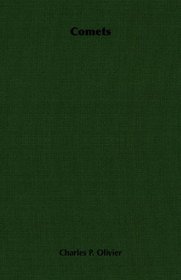Search -
Comets
Comets
Author:
Text extracted from opening pages of book: COMETS BY PROFESSOR OF ASTRONOMY AND DIRECTOR OF FLOWER OBSERVATORY, UNIVERSITY OF PENNSYLVANIA LONDON BAILLlfiRE, TINDALL AND COX S Henrietta Street, Covent Garden, W. C. 2 1030 ALL RIGHTS RESERVED, 1930 PRINTED IN AMERICA TO MY WIFE MARY FRANCES FENDER OLIVIER THIS BOOK IS AFFECTIONATELY DEDICATED PRE... more »
Author:
Text extracted from opening pages of book: COMETS BY PROFESSOR OF ASTRONOMY AND DIRECTOR OF FLOWER OBSERVATORY, UNIVERSITY OF PENNSYLVANIA LONDON BAILLlfiRE, TINDALL AND COX S Henrietta Street, Covent Garden, W. C. 2 1030 ALL RIGHTS RESERVED, 1930 PRINTED IN AMERICA TO MY WIFE MARY FRANCES FENDER OLIVIER THIS BOOK IS AFFECTIONATELY DEDICATED PRE... more »
ISBN-13: 9781406759600
ISBN-10: 1406759600
Publication Date: 3/15/2007
Pages: 272
Rating: ?
ISBN-10: 1406759600
Publication Date: 3/15/2007
Pages: 272
Rating: ?
0 stars, based on 0 rating




